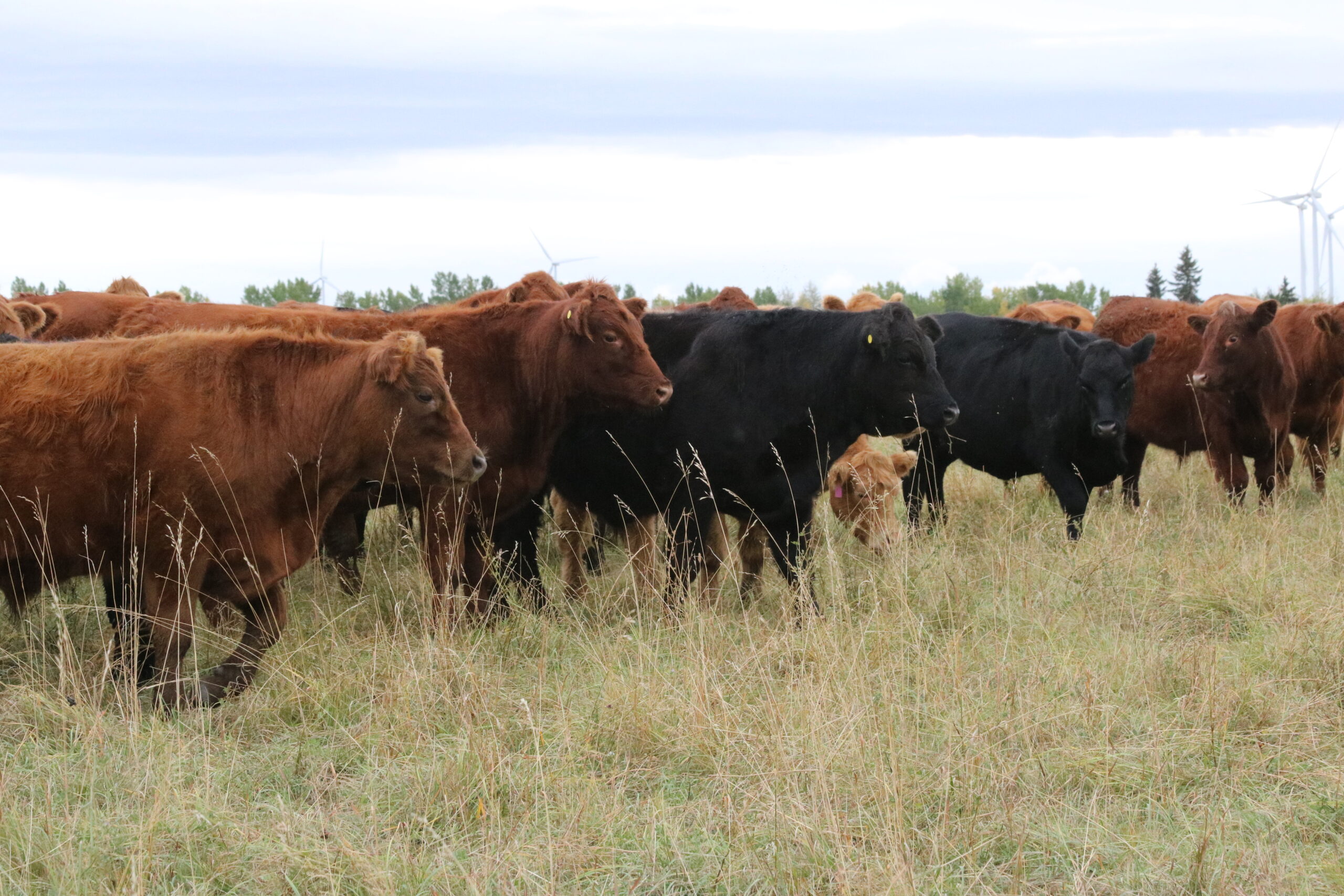
A close friend of mine recounted a part of an event he was at where children were being educated about the environment.
One of the educators happened to be pretty radical. But well-meaning.
The children presented what they had learned from the day’s events. The educator leaned close to one of the children and asked softly, “And what did you learn about how cows hurt the environment?”
As my friend told me this, I couldn’t stifle a groan. He knew why, chuckled, and continued.
“And she said, ‘cow farts.'”
“Of course she did!” I laughed.
He told me he could’ve stood up and corrected them about it, but he felt it wasn’t the right time or place. I had to agree, as I’ve encountered people like that educator who, no matter what you do or say, have their minds already made up and cannot be changed.
However, the educator isn’t everyone. That’s why I’m still able to write stuff like this.
Thank God there are people like you who are still open about this.
Contents
Yes, methane comes from cows & cattle
It is foolish to argue that cows don’t produce methane. But it’s equally foolish (and unscientific) to argue that cows emit methane as “cow farts.”
(For what it’s worth, I’m also using the colloquial version of “cows” since the majority of people use that same term, even though, technically, a cow is a female bovine that has had a calf).
Cattle are ruminants. This simply means they regurgitate what they’ve previously eaten as cud to chew while resting. Ruminants have multiple chambers with their true stomach. They do not have four stomachs, per popular urban myth. Instead, they have three forestomachs. These forestomachs are extensions of their esophagus.
The forestomachs are the reticulum, rumen, and omasum. Their true stomach is the abomasum. The rumen is where the main activity happens.
Cows are herbivores. They eat a “plant-based” or “vegetarian” diet. However, the plants they eat are much harder for us to digest. This is where the rumen comes into play.
Their rumens house billions of microbes—bacteria, fungi, and protozoa. They take what their hosts consume and decompose it in an anaerobic (little or no oxygen) environment. What microbes leave behind as waste is absorbed into the cow’s bloodstream and used in the cow’s body. When they die, they move into the true stomach (abomasum), where they are digested. Most of a cow’s protein comes from dead microbes, contrary to popular belief.
Scientists call this enteric fermentation because it’s a natural part of the digestive process of all ruminant animals.
Other byproducts microbes produce include gases like methane and carbon dioxide. The ruminant animal releases these gases by burping. Very little is released through the rectum as “farts.”
Think of it: what “exit,” if you will, is the rumen located the closest to? The anus or the mouth?
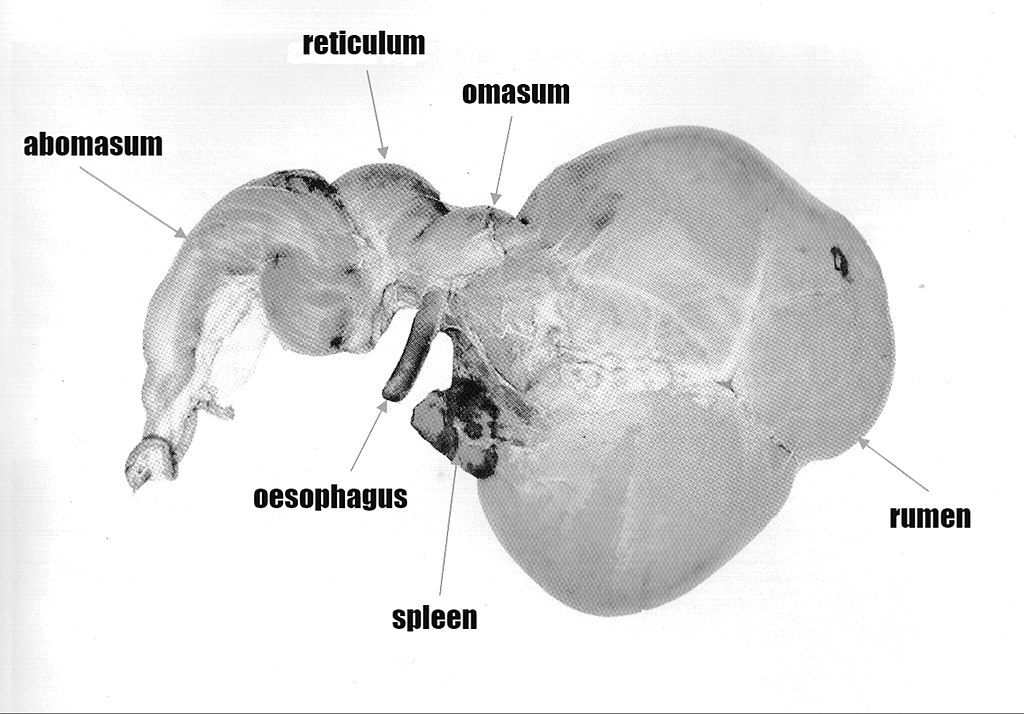
Since the rumen is located before the true stomach and the small and large intestines (see diagram above) and after the mouth and esophagus, and since almost everything in nature follows the rule of the path of least resistance, the gas from the rumen will go out through the mouth.
This effortlessly disproves the belief that cows, cattle and all ruminants expel most methane by farting, aka flatulence.
With this finally out of the way, I want to get to the real topic at hand!!
Are there other sources of methane other than cattle?
Most definitely! Other major sources of methane include:
- Wetlands, including beaver ponds
- Peat bogs
- Rainforests
- Wild ruminants (antelope, deer, bison, buffalo, moose, wildebeest, caribou, etc.)
- Anaerobic soils (primarily those on croplands that are tilled)
- Rice production
- Manure lagoons and composting piles
- Fossil fuels, particularly from crude oil extraction, coal energy extraction, and gas (primarily natural gas)
- Landfills
- Biomass burning from forest fires, human-caused burning of trees from slash-and-burn practices, and others
- Volcanic eruptions
- Oceanic currents that bring up methane bubbles from the deep sea
Methane comes from both natural sources and human activities. An estimated 60% of today’s methane emissions are the result of human activities. The largest sources of methane are agriculture, fossil fuels, and decomposition of landfill waste. Natural processes account for 40% of methane emissions, with wetlands being the largest natural source.
From NASA’s wesite on Methane (Link:https://climate.nasa.gov/vital-signs/methane/?intent=121)
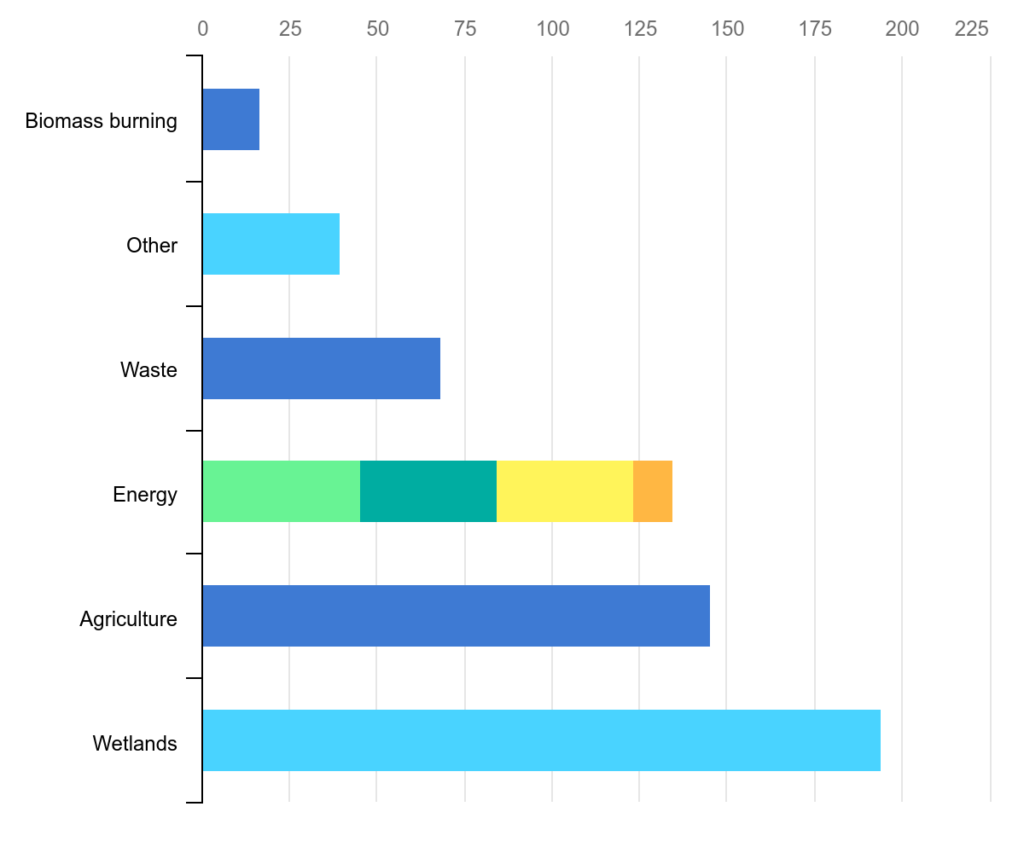
Estimates of methane emissions are subject to a high degree of uncertainty, but the most recent comprehensive estimate suggests that annual global methane emissions are around 570 million tonnes (Mt). This includes emissions from natural sources (around 40% of emissions), and those originating from human activity (the remaining 60% – known as anthropogenic emissions).
The largest source of anthropogenic methane emissions is agriculture, responsible for around a quarter of the total, closely followed by the energy sector, which includes emissions from coal, oil, natural gas and biofuels.
Further information from IEA to support NASA’s estimates. (Link: https://www.iea.org/reports/methane-tracker-2020)
Comparing methane levels to some agriculture sectors
If this isn’t telling you something, I don’t know what is.
The graph below shows how methane emissions have skyrocketed over the last two centuries.
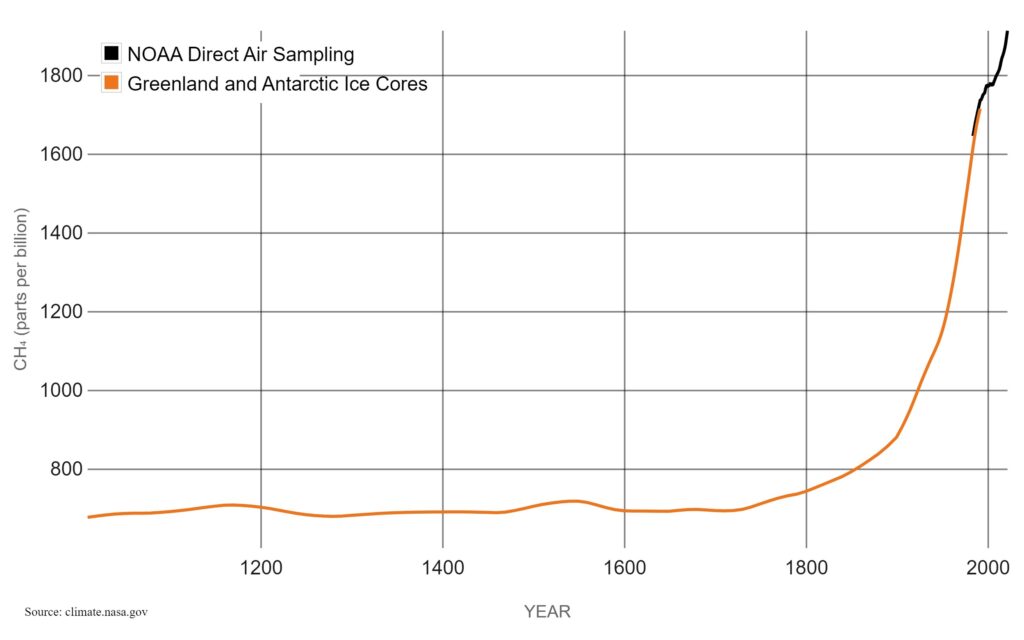
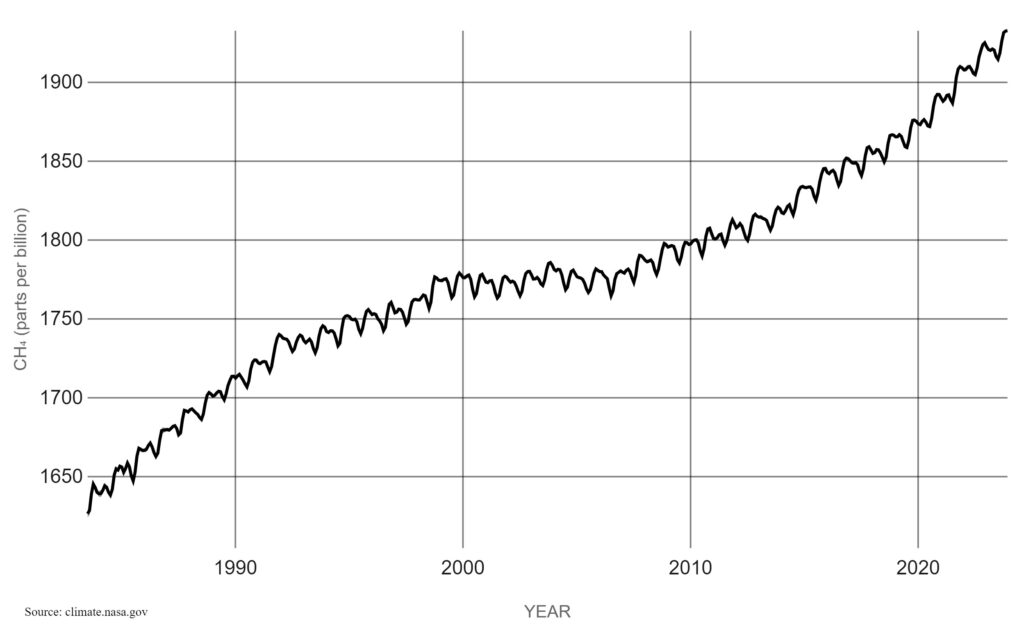
Now, compare those graphs with the historical trend of the global livestock (cattle) population.
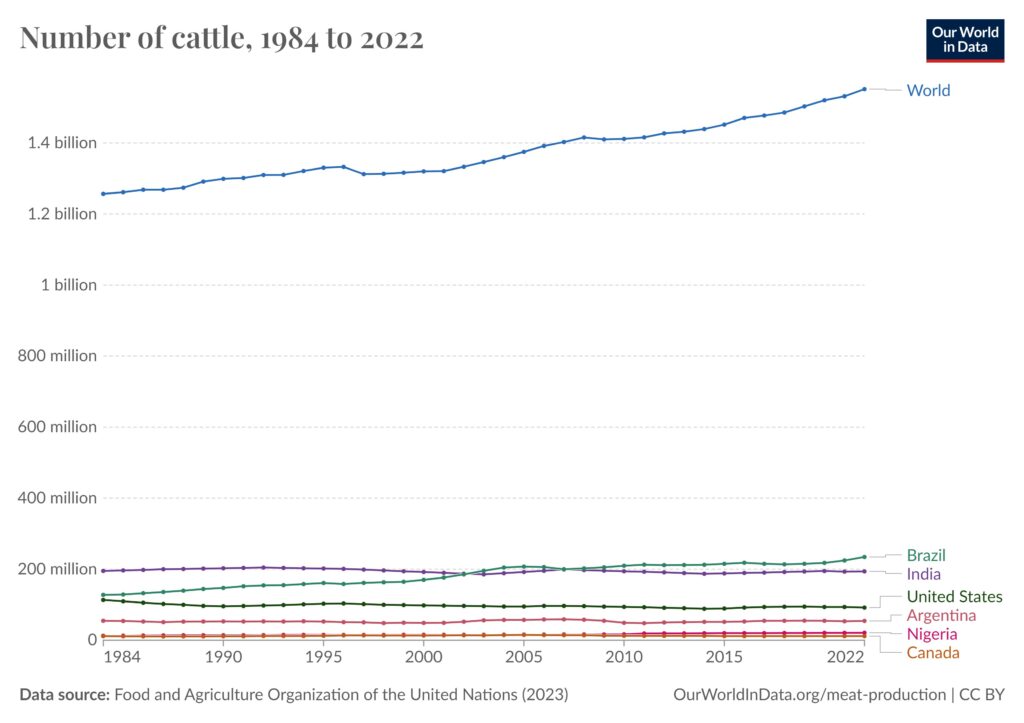
Looking at these graphs, you might automatically think that as the cattle population has increased, so have methane emissions because they match up.
Well, this is only partly true. Ruminants have been around for a very, very long time, and yet methane emissions were at their lowest right up until the late 18th century. We don’t know how many millions of bison roamed the American and Canadian West before their near-extirpation, let alone how many other ruminants roamed across the European, Asian, African, and South American continents. My best wild-ass educated guess is that there were at least a billion wild ruminants globally, but there’s little to no recorded history to confirm.
Why were there so many ruminants around, yet methane levels so low as they were? I’ll discuss that in a bit. But the reason I bring this up is that it brings me to these next two graphs. Check these out.
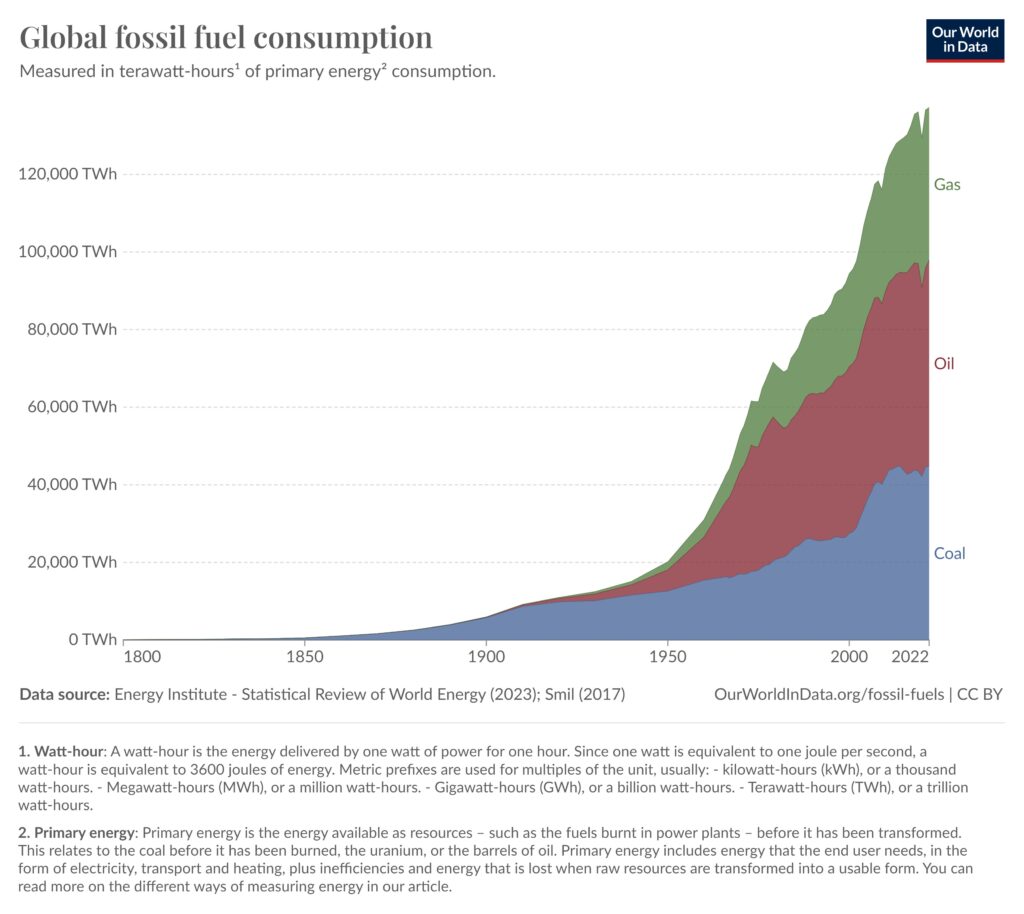
It’s tough to pinpoint who is to blame because, truly, the methane issue is more complex than meets the eye. However (and this is a huge HOWEVER), it’s really tough to ignore this graph and how it closely coincides with how methane emissions have also spiked in a similar fashion.
Here are another few scary graphs to look at and ponder about. Maybe it’s time folks who are so hung up on the “cows are killing the environment” mantra to see stuff like this and think, hmm, are cows really that responsible for climate change just because they burp methane?
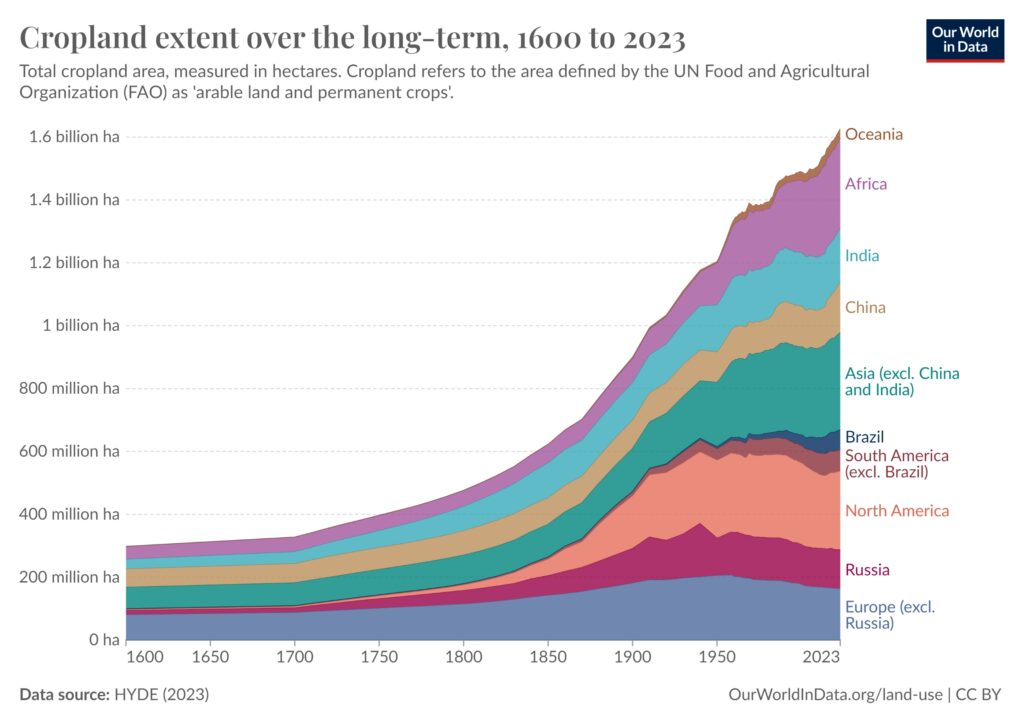
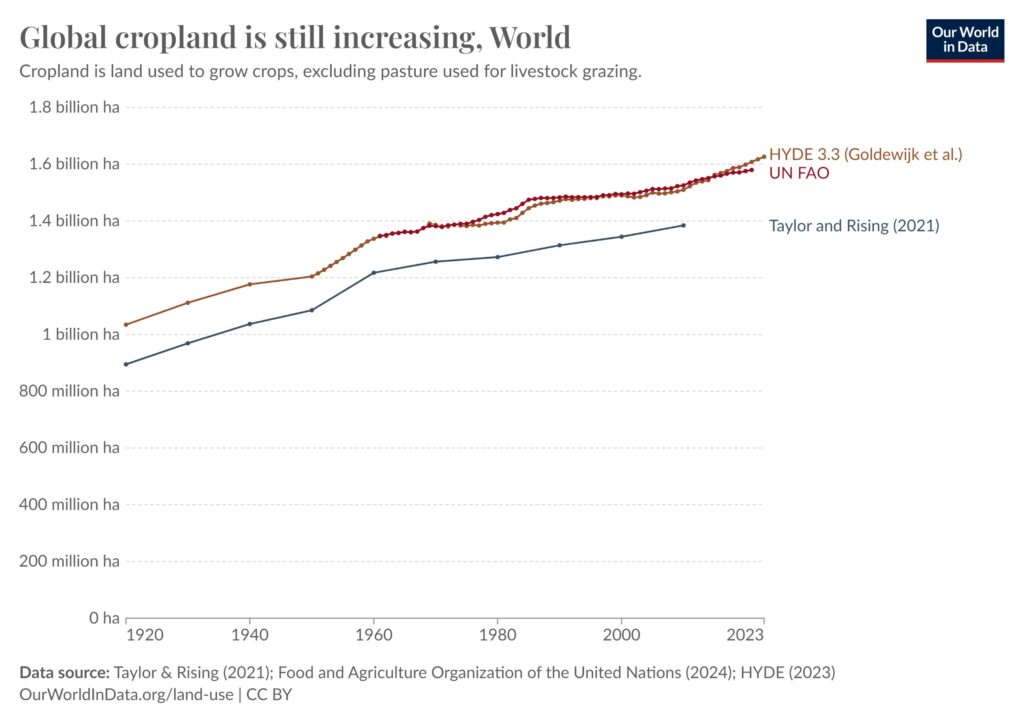
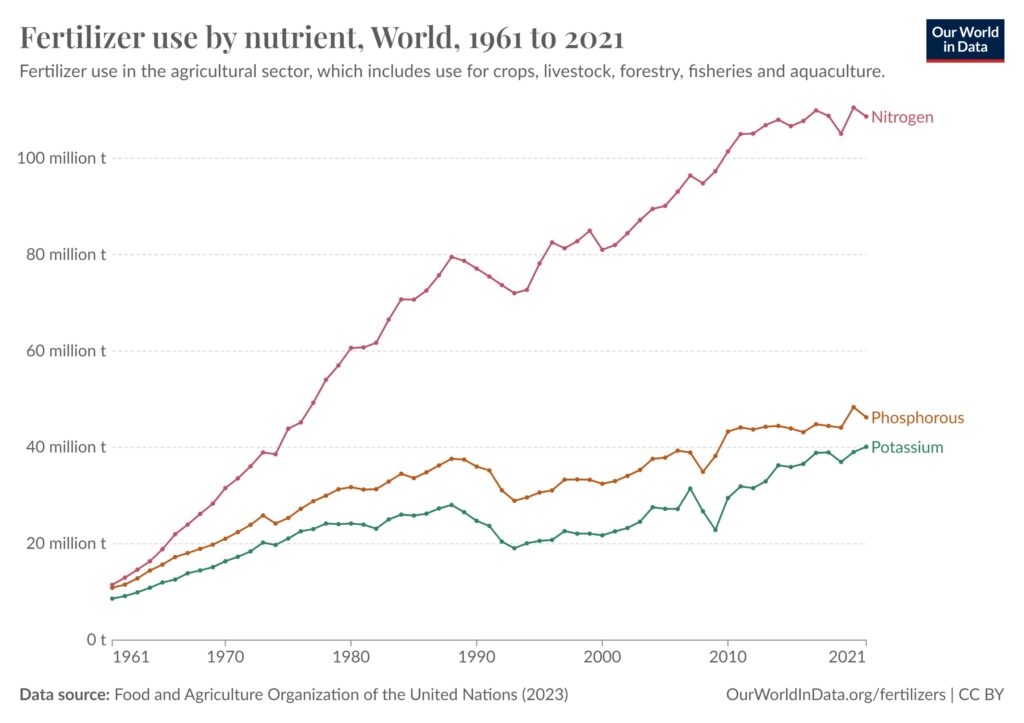
When cattle are being made out as the supposed culprits, you must admit there’s a missing puzzle piece here. Like a very big puzzle piece. With the increase in cropland acres, the increase in the use of fertilizers, and millions of livestock housed in so-called “factory farms” (preferably called confined animal feeding operations or CAFOs) where some sources estimate that 99% of all livestock in the United States (unknown globally) are raised in CAFOs, there’s something not right here.
Surely, just because cattle are ruminants and can’t help themselves when it comes to what gases they burp up, it’s not entirely their fault that methane levels have been rising over the last 150 years or so.
I know we’ve got a lot to do with it. But many of us want to point fingers at cattle, not ourselves. Why??
Why are cattle getting the blame?
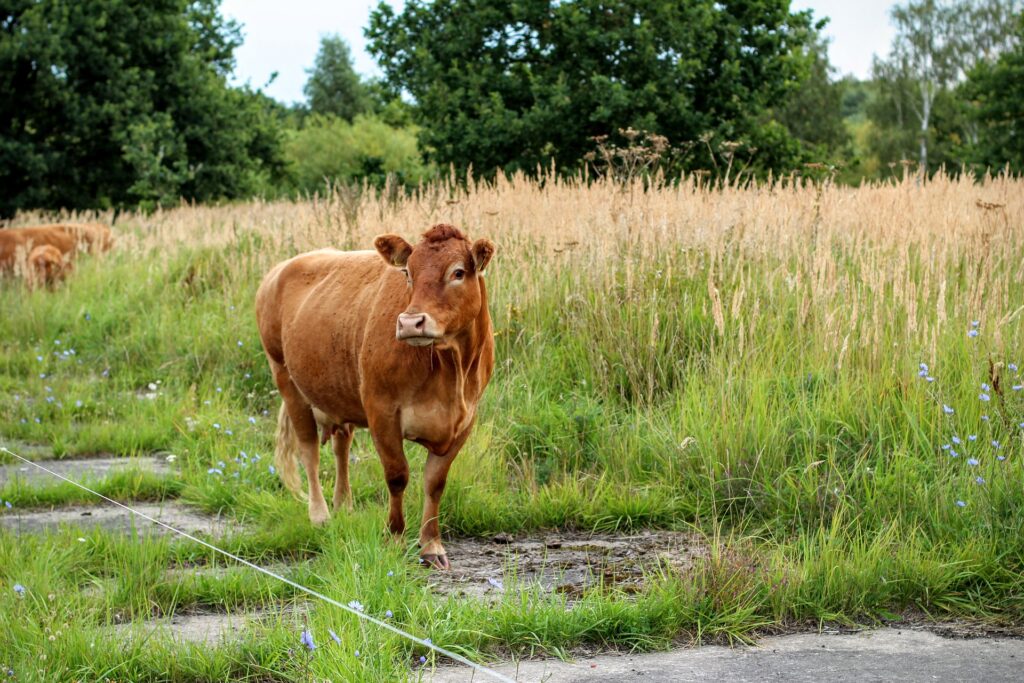
There are two main reasons. The first is that they’re easier to count and measure. The second has more to do with the political clout of environmentally concerned lobby groups. More on that in a bit.
Other sources, other than cattle, are much harder to measure. I’ll let my friend from Regenetarianism explain it to you.
[…] these sources of methane are measured in different ways. You measure them via inventories that exist and you’re extrapolating. That’s called bottom-up analysis. Then there’s top down where you’re figuring out the carbon isotopic signatures in the atmosphere and trying to differentiate between different sources of emission based on those isotopologues (ratios of C12 to C13). I also just read a recent paper where they not only looked at carbon signatures, but they also looked at hydrogen signatures to try to further delineate emission sources, because there’s a lot of overlap of signatures (Takriti, M et al 2023). Atmospheric scientists have also launched satellites within the last five or six years. So there’s a lot of satellite data especially of hot spots filling in a lot of the unknowns (Yu, X et al 2023, Irakulis-Loitxate, I et al 2022). The problem with bottom up is what’s easy to measure is usually what gets the blame.
Regenetarianism, May 28, 2023. The Methane Chronicales Plus Why You Can’t Discuss Methane Without Discussing Hydroxyl Radicals.
This quote from the IEA confirms these findings and explains exactly why such measurements are very problematic in the context of targeting methane emissions as a greenhouse gas emission concern:
Methane emissions can be estimated in a number of ways. Bottom-up approaches can use activity data (e.g. the number of facilities or the extent of operations) multiplied by standardised emission factors (e.g. default values or leak rates for particular types of equipment). Top-down methods tend to measure atmospheric methane concentrations, normally by airborne or satellite sensors, to infer emission releases.
Estimates are subject to significant uncertainty over the magnitude of emissions sources and their variability. Some of the largest emitting events are the result of accidents and unpredictable process failures and these might contribute a large level of emissions from oil and gas operations, but these are often not included in bottom-up inventories. Tried and tested approaches are already available for lowering methane emissions, but better and more transparent data are needed to facilitate targeted action.
IEA (2022), Global Methane Tracker 2022, IEA, Paris https://www.iea.org/reports/global-methane-tracker-2022/estimating-methane-emissions, Licence: CC BY 4.0
How methane is measured from cattle classifies as the “bottom-up” approach. Regeneratarianism explains:
Enteric methane from cattle is easy to measure with chambers, mask, and SF6 tracers (Zhao, Y et al 2020). Such measurements are out of ecosystem context. It’s treating cattle like tail pipes. Then they take these out of context measurements and multiply them 1.2 billion times. That’s just gross emissions. There’s also a lot of variability based upon what cattle eat, their health condition, etc. So, these measurements are not necessarily terribly accurate.
Regenetarianism, May 28, 2023. The Methane Chronicales Plus Why You Can’t Discuss Methane Without Discussing Hydroxyl Radicals.
Enteric fermentation is undoubtedly the largest component in most pie graphs when you Google “global methane emissions” in the image search.

Source: Wang et. al. (2020). Enrichment experiment of ventilation air methane (0.5%) by the mechanical tower. Scientific Reports. 10. 10.1038/s41598-020-63698-x.
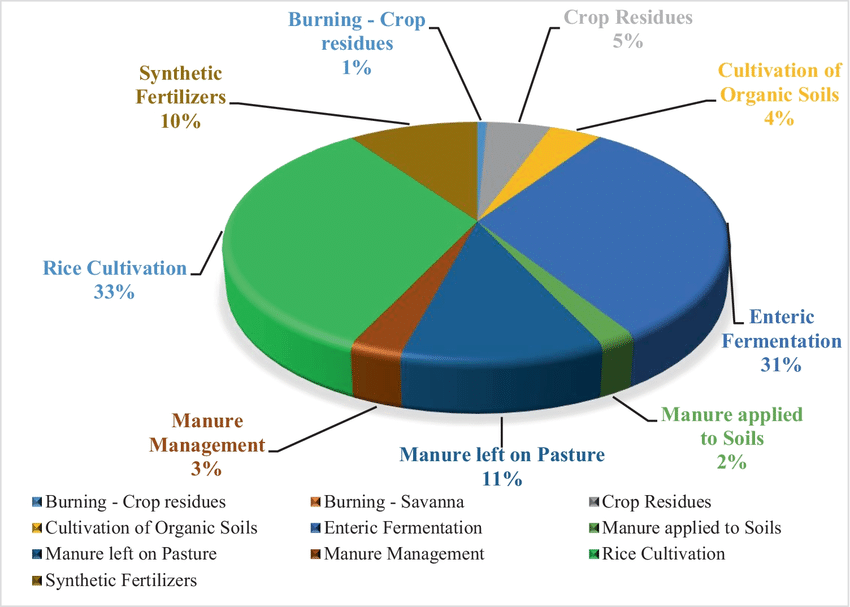
Source: Hossain et al. (2022). Towards a clean production by exploring the nexus between agricultural ecosystem and environmental degradation using novel dynamic ARDL simulations approach. Environmental Science and Pollution Research. 29. 10.1007/s11356-022-19565-5.
But treating ruminants like tailpipes by measuring only what they burp (or, as too many wrongfully assume, flatulate or fart) out and then using that data to assume that ruminant animals are bad and their populations must decrease is very, very concerning.
Sure, it’s reductionist science. However, the really concerning part is that policy-makers are taking this reductionist science and making legal decisions to legislate change that works against ruminant animals. These include encouraging people to eat less or no beef, encouraging farmers to make feeding and breeding decisions that have the potential to be more costly, futile, and infeasible in the long run, and encouraging the media to falsely influence public opinion against ruminant animals (i.e., cattle).
I mean, it’s not like it’s already happening. Ever since Livestock’s Long Shadow, published in 2006 by the United Nations Food & Agriculture Organization (UN FAO), gained an incredible amount of publicity and discussion, people have hopped on the bandwagon that “cows bad, plants good.” It’s humorous, frankly, because the authors didn’t intend to cater to the pro-vegan audience despite this popular article from The Guardian often set up as an example. They concluded that animals raised conventionally in either confinement or pastorally were an environmental concern and provided suggestions for raising animals with the environment in mind.
However, they made significant errors in their calculations, particularly when comparing emissions from transportation to emissions from livestock. Henning Steinfeld, senior editor for the publication, acknowledges that the authors failed to compare their life-cycle emissions from livestock to life-cycle emissions from the transportation sector. Frank Mitloehner, a researcher at UC Davis, called out this error in 2018, which the authors of LLS and FAO corrected. Originally, LLS claimed that livestock were responsible for 18% of all anthropogenic greenhouse gas emissions and corrected it c. 2018 to 14.5%. (I will cover more of this in a future post, as the calculated numbers have gone down even further from the FAO’s disastrous claims, which people, including policymakers, are scrapping over to this day.)
But I digress.
Can methane be mitigated? How?
I’ve found that in methane discussions and people’s quest to continually find reasons to demonize cattle, there’s almost no talk about ways to mitigate methane. If there is such discussion, it’s often around band-aid solutions that may or may not help. People seem hung up on the “obvious” yet overly simplistic solution to reduce cow numbers.
Many don’t believe methane can be mitigated. They strongly believe methane will simply go up into the atmosphere unabated and stay there in some invisible cloud, contributing to the warming potential.
Since, you know, methane is a natural greenhouse gas (along with carbon dioxide, nitrous oxide, water vapour, and other gases) with a lifespan of only 7 to 12 years and has a warming impact of 28.9 times that of carbon dioxide from thermogenic sources, and 27 times from biogenic sources.
Sadly, some governments seriously believe this by creating legislation to make it increasingly harder for farmers to raise cows. Ireland almost went as far as getting farmers to reduce their cow herd to almost zero. Thankfully, that plan got scrapped.
The problem is that reducing ruminant numbers isn’t the answer. The answer may have more to do with plants.
The following is extremely brief. I will expand a lot more in a future post.
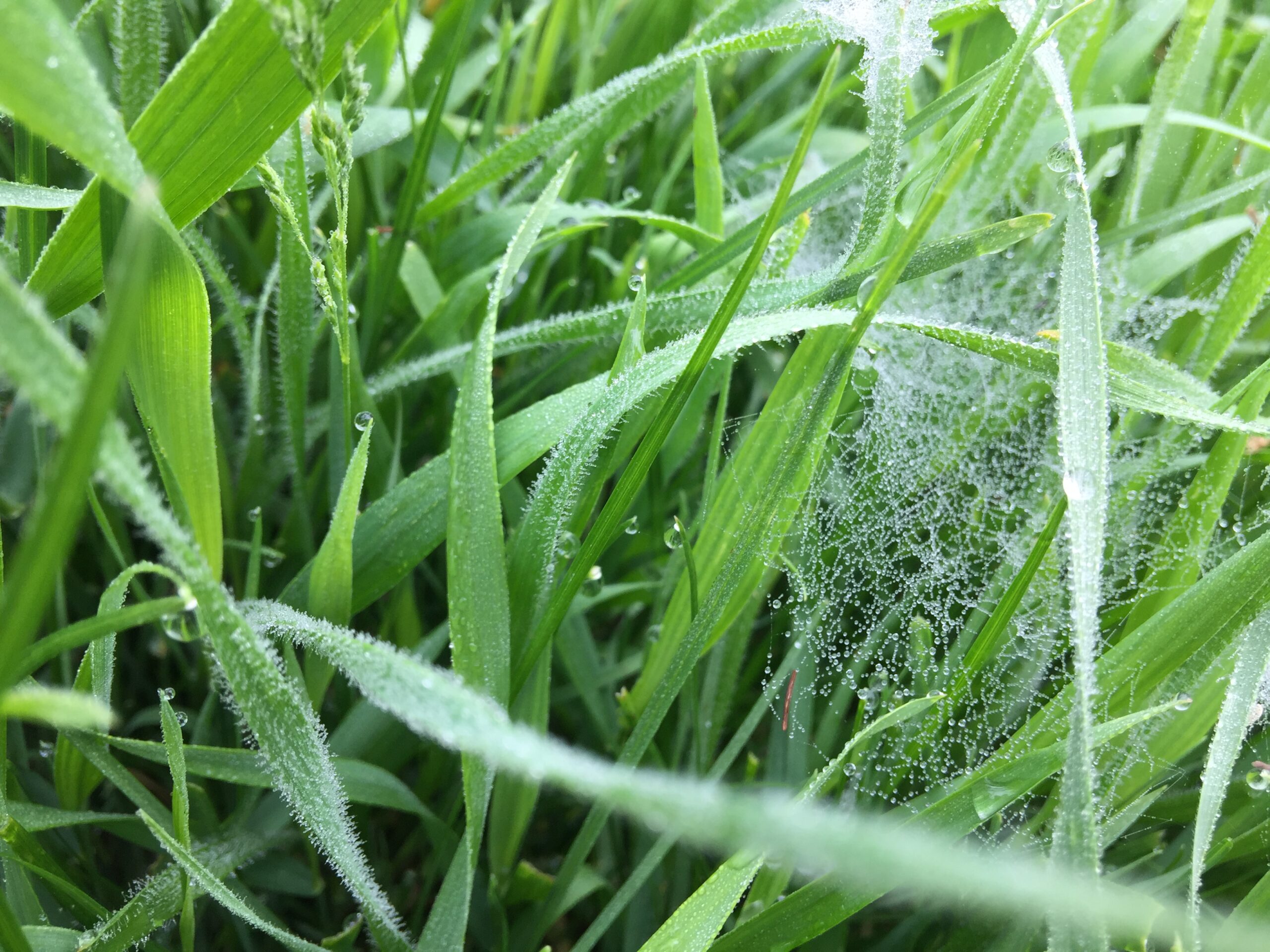
Plants do something important for all living things, including us: photosynthesize. Photosynthesis produces water vapour, oxygen, and sugars for the plant. We need oxygen to live. Oxygen also plays an important role with methane right along with water vapour.
Methane is oxidized when hydroxyl radicals (OH–) form and react with methane. Hydroxyl radicals can’t be formed without oxygen, water vapour, and UV light.
Methane in the atmosphere doesn’t just stay there, either. Much of it, too, gets oxidized and rendered inert.
To a lesser degree, methanotrophic bacteria also “capture” methane and render it inert. For them to do this, methane would have to come from decomposing matter or the breath of grazing animals.
The important aspect is that ruminants are not creating new carbon. Plants take in carbon in the form of carbon dioxide when they photosynthesize, while ruminants consume this carbon. Some get stored and used in their bodies, while the rest is expelled when exhaling, eructating (burping), or expelling feces.
The other important aspect is that there must be green, living, photosynthesizing plants available for all this to occur. Where there are no plants, there’s a legitimate cause for concern.
Where methane from cows is posing a legitimate concern

It’s not what you think. Seriously.
You’ve probably heard of the studies that have compared enteric fermentation emissions between grain-fed and grass-fed cattle where findings have concluded the highest emissions come from grass-fed cattle versus grain-fed.
Remember the quote above that pointed out such studies treat these animals as mere tailpipes? This means the ecological context has been completely removed when such data analyses are collected and compiled in a research paper.
In other words, methane emissions from grass-fed cattle are a non-issue, particularly when they’re part of a grazing management system that encourages a lot of plant biomass (and diversity) on pasture.
However, methane from grain-fed cattle is a significant issue despite the fact that they burp out less than those on grass.
Let me back up a little and answer one important question.
Why do grass-fed cattle emit more methane than grain-fed?
Scientists analyzing methane emissions from the two isolated variables (grain-fed versus grass-fed) use two primary diets.
One diet is comprised primarily of grass (possibly with some legumes). Grasses harvested for the study are nearing the end of their lifecycle, where they’re in flower. Plants at this stage of maturity are higher in fibre and lower in sugars and protein.
The other diet is that of a “finisher ration,” cattleman’s lingo for a mix of mostly grain (~85%) and some roughage (~15%). Lactating dairy cattle are on a slightly more roughage-based ration. Such a diet is designed to put fat on cattle quickly (over 3 to 4 months) before slaughter.
(Note: “roughage” refers to non-grain feeds like hay and silage, where most feed comprises leaves and stems of harvested grains and grasses. Hay is sun-cured grasses and legumes (like alfalfa). Silage is fermented grasses that have been chopped into small bits the width of your hand.)
In other words, scientists compare diets that are harder to digest (tall grass) versus very easy to digest (grain + some hay or silage).
The rumen microbe population has to work harder to digest and break down pasture grasses (hay even more so). As a result, more methane is produced and released.
On the contrary, grains are so easy for microbes to digest it’s not even funny. Grain’s swift breakdown into large sources of energy and some protein gives rumen microbes a fast food source and an explosion in population. Less methane is produced as a result (and at the cost of the well-being of the ruminant, which, if it gets too much of “the good stuff” too quickly, gets very sick and can die if the farmer doesn’t save it in time).
Also, grain-fed cattle have shorter lives before they are slaughtered compared with grass-fed animals. Grass-fed cattle usually are two to three years old before they’re turned into beef, unlike grain-finished cattle that are often slaughtered between 10 and 18 months old.
But just because grain-fed animals produce less methane doesn’t make it better for the environment.
Factoring in the oh-so-important ecological context
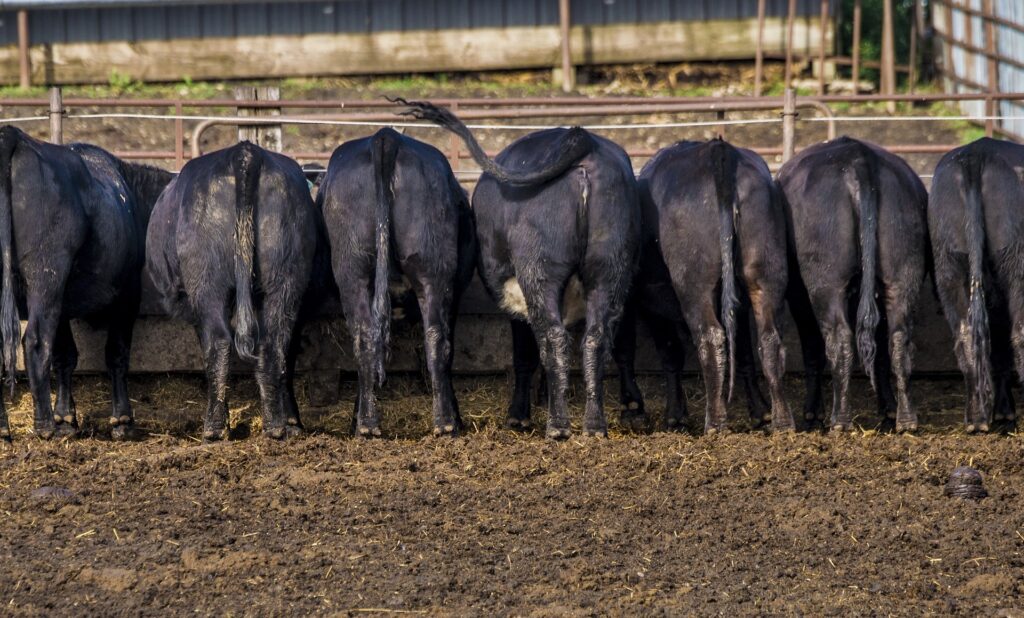
In such operations, ethical implications aside, methane has nowhere to go but into the atmosphere.
Feedlots and dairy facilities are where animals mostly live on dirt, manure, and dead plant material (straw). Where are all the natural green photosynthesizing solar panels?
They’re well outside the corrals and barns. Not much is available to “capture” methane and oxidize it.
Such facilities are also where manure accumulates and decomposes. This is yet another source of methane that is not readily oxidized just above the surface because almost no green living plants are available in the immediate vicinity to do their job!
So just because grain-fed cattle and cattle raised in CAFOs emit less methane than their pastured hillbilly kinfolk doesn’t mean it’s the right way to raise them.
They didn’t put themselves there, folks. We did. We decided it was “best” to raise them for meat this way because of the constant demand for cheap, ready-to-buy meat we can easily get at the grocery store instead of traversing out to see their favourite farmer and spending over $1000 to get a half, quarter, or whole animal to throw in the freezer.
I know there are plenty of you who prefer grain-finished beef over grass-finished beef, but it’s not about that. This is about considering that these huge confinement operations that mass-produce beef (and milk) are a significant issue when it comes to the bad C-word some still think isn’t real and is guaranteed to generate as many heated debates as religion and politics: climate change.
I’ll get off my soapbox now.
Where can cows make methane a non-issue?

Speaking of ecological context, pastured cattle have a huge potential to contribute to the methane mitigation concept.
(As do all other ruminants, from bison to sheep, goats to moose!)
I say “potential” because we’ve got a long way to go.
People have been led to believe that pasturing livestock is a bad thing, and I understand why. They see pastures that are almost nothing but mismanaged: there are so much overgrazing, riparian areas with significant hoof damage, trees at near death, and, particularly in arid regions, desertification occurring wherever cattle grazing occurs.
Let’s not forget the need for crutches like dewormers, fertilizers and even pesticides to keep pastures productive and cattle “healthy.” Unproductive pastures are eventually tilled and reseeded in five years because mismanaged animals have damaged them badly.
These observations make folks convinced that they’re better off kept in confinement so that they don’t cause further damage. Besides, how can cows mitigate methane if they seem good at destroying the environment? It’s so stupid and insane to think like that!
Except what folks see is what’s called continuous grazing. It allows a small herd of animals to have access to a large area for quite a long time—months, usually! They can go wherever they want, whenever they want. Without predation, they are comfortable spreading out rather than sticking as close to each other as possible.
Personally, I’ve seen way more mismanaged pastures than well-managed pastures. So again, I understand the skepticism.
But I’m in no position to support it. I know there’s a lot more hope than that.
It will require a drastic change in management. This will mean saying goodbye to the old ways of continuous grazing and hello to regenerative grazing or Holistic Management (the same thing, just different terms).
In a very empty nutshell, it’s akin to mimicking the old, old, wild ruminant herds of hundreds, thousands, and millions of years ago. These herds consisted of animals that stayed close to each other, eating, pooping, peeing, and trampling in a confined area before quickly moving on to the next patch of land. They often did not come back to that area for months. Predators like wolves, bears, and indigenous humans encouraged wanton trampling as opposed to careful stepping without even trying.
This necessary disturbance did two major things. First, it created dead plants combined with animal manure that decomposed and turned back into earth. Second, it granted new life to plants that began to regrow shortly after the animals left. Plants were more than just grasses; many wildflowers also took hold. Insect life came to take advantage of the new food source, and their predators quickly followed suit.
Climate-wise, the plants “captured” and stored carbon in the soil. They swiftly acted to oxidize methane from these grazing ruminants by photosynthesizing and transpiring, releasing oxygen and water vapour to react with the sun and create hydroxyl radicals.
Cows and cattle are our best proxy to do exactly this. Since the old bison herds were so significantly decimated over 150 years ago by white settlers, they’re not in the population today as they were to be the primary cursor to mitigate methane. “Non-native” domesticated livestock like sheep, cattle, and goats are. (Non-ruminant herbivores like horses, mules and donkeys are, too!)
It’s well past time to stop blaming cattle for climate change. It was never their fault, to begin with, so why should we continue to dumbly and blindly blame the pawns who can’t even move the rest of the chess pieces?
IT’S THE HOW, NOT THE COW. Stop blaming cows for what we are responsible for. Don’t be a ruminant/cow hater!!
But don’t be a people hater, either. I know there are many evil, greedy, selfish people out there, but there are also people who want to create change and be the change.
Are you the first, or are you the second?
Future topics on more methane discussions
If you have any suggestions on what I should cover more, please comment below.
Otherwise, these are some future topics that I need to revisit as I write this lovely, albeit lengthy, article.
- How do scientists go about measuring methane from cattle?
- An in-depth look at how ruminants produce methane
- The science behind Nature’s methane oxidation, and we should be concerned
- Philosophy and bullshit behind the beliefs that cow farts are destroying the environment
- My “beef” with supplemental feeds to reduce methane emissions
- Methane analysis and arithmetic when it involves ruminants
- Wetlands & Ruminants: Methane Context is Crucial
- Here’s how cattle and methane are merely a part of the Carbon Cycle
This is great, thank you!
Clear and complete… If you’re agree I would like to translate in french and submit it to newspaper ?
Hi Adam,
Sure, if you like. Please make sure you give attribution to me and this website if you do. 🙂
~Karin
Great article, raising some important points that don’t get any airing in public. But I’m amazed at how you got through it without mentioning the biggest issue of the lot; GWP100. This completely arbitrary measurement is the issue most to blame for this total miscomprehension of methane and ruminant methane in particular. GWP* has been available since 2018 but hasn’t made enough of a dent in the bureaucratic and political nightmare that has been foisted onto the world by various misguided pressure groups. GWP* really upsets the apple cart, which is why they’re trying to pretend it doesn’t exist. But the truth will out eventually.
You are still talking about “emissions” when you should be talking about “warming impact” but also NET emissions as a halfway house. Agriculture is only being discussed as a gross emitter. Annual carbon absorption by every farm in the planet, and sequestration don’t even get mentioned or allowed for by policymakers looking to place blame. This absolutely has to stop. The public are being lied to on an epic scale.
You mention methane’s GWP100 warming impact as 30. This is wrong. It’s 29.8 for fossil sources and 27 for biogenic methane. This fact alone reveals how biogenic methane from ruminants and others is different from fossil fuel leakage. And yet, as you point out, policymakers reach for the easiest solution they can influence. Doing something worthwhile is far too difficult, so farmers can be abused by people behind desks with zero understanding of the complicated but known science, job done.
Frank Mitloehner pointed out the glaring issues with Livestock’s Long Shadow but I don’t believe he was involved as an author of the report. Good to see ref made to Regenetarianism, fantastic source of real information. Everyone should go to that website, the person responsible is a giant, although remains anonymous as I understand it.
I’ll leave with a rough quote from Prof Myles Allen, one of the creators of GWP*. If all of the farmed ruminants on the planet were culled tonight, the difference in global temps would be considerably less than 0.1 degC. And that would only be extremely temporary. I have also seen a calculation done using Python code, which puts it at less than 0.02 degC, which backs up Allen’s comment. That is using GWP*. Awkward eh?
Hi Tom!
Thanks so much for your comment. I plan on making a separate post entirely about the GWP100 because it would’ve made this post far too long–and it was long enough as it was. I’ll make the corrections about Mitloehner, as that’s a pretty important piece to have corrected in this article. I’ll also correct the numbers for thermogenic versus biogenic methane.
~Karin